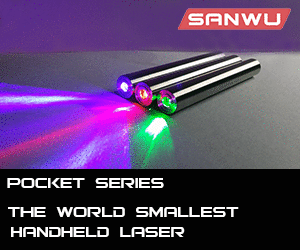- Joined
- Jun 12, 2015
- Messages
- 7,760
- Points
- 113
As the thread title suggests,
I am asking for those with a bit of spare time on their hands to help me out with a fun little problem.
I'm not going to give away the reason why yet, but I appreciate it is a random request.
These are the conditions:
Thank you.
It's probably best that you avoid testing with high power Class 3b's/4's. Stick to <100mW.
I am asking for those with a bit of spare time on their hands to help me out with a fun little problem.
I'm not going to give away the reason why yet, but I appreciate it is a random request.
These are the conditions:
- The laser/s used must be LPM'd
- The laser must not be focused in any way
- The dot size must be accurately determined on both axes.
- The balloon must be black.
Thank you.
It's probably best that you avoid testing with high power Class 3b's/4's. Stick to <100mW.




